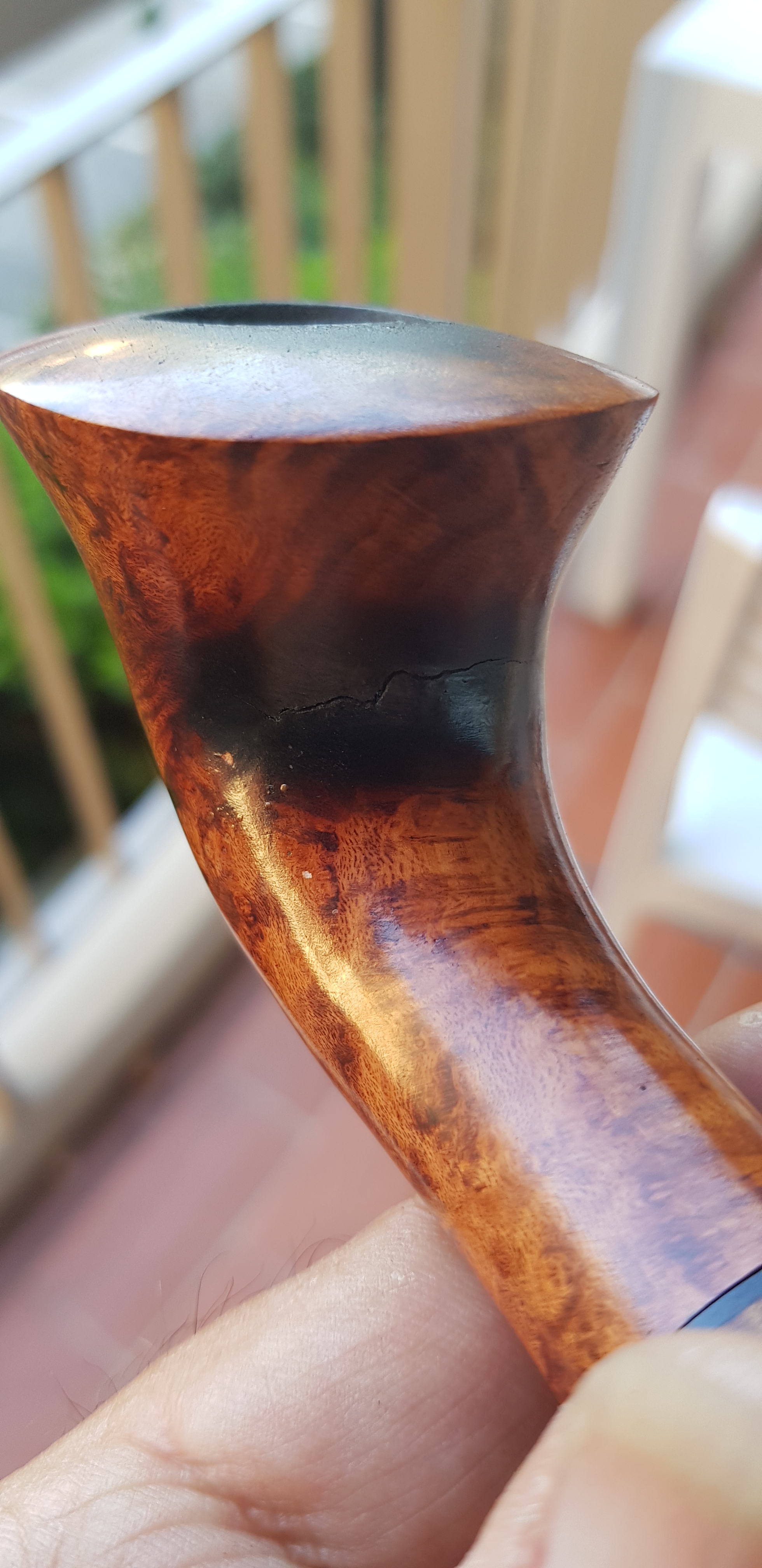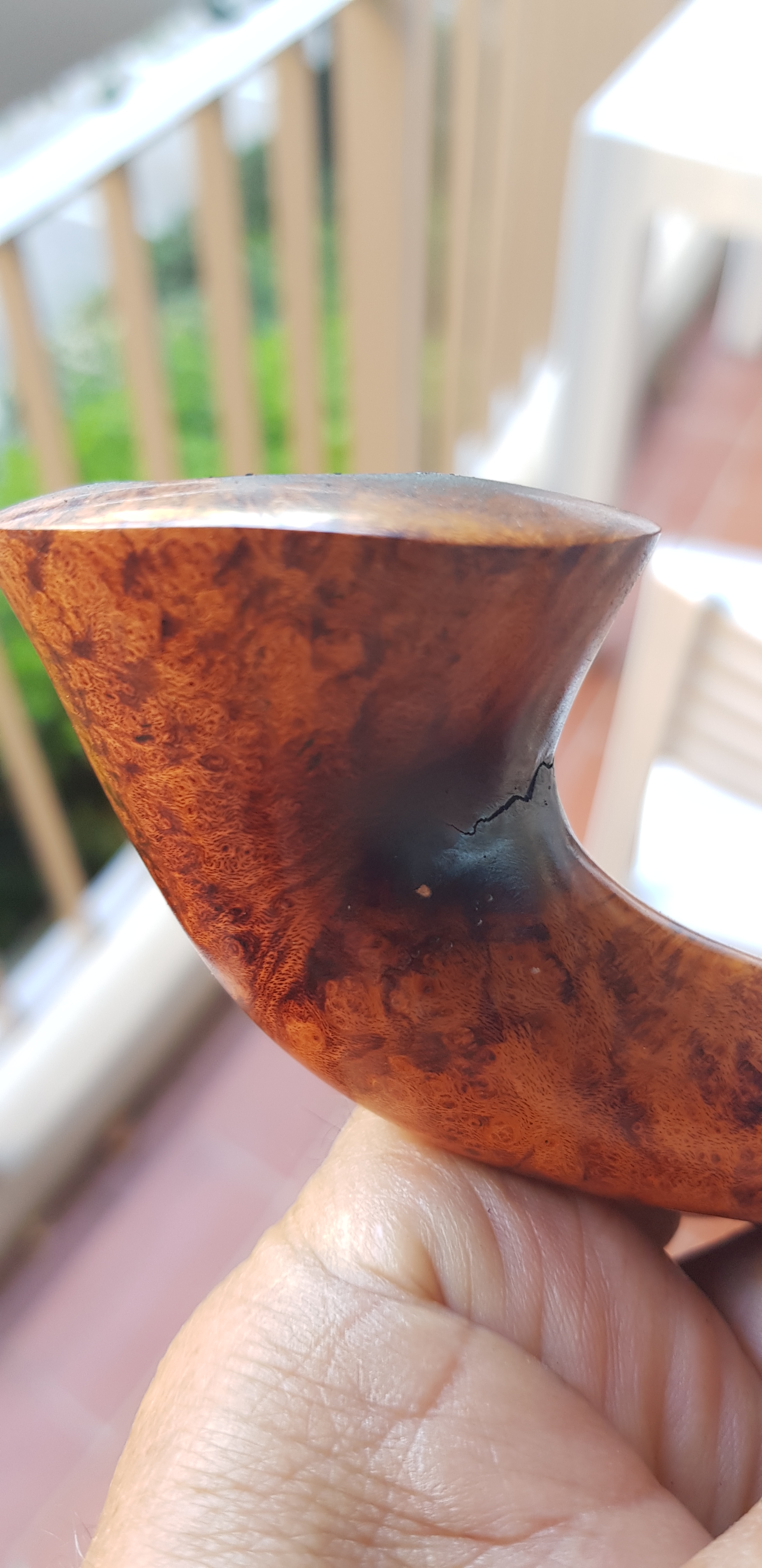Bowl coating pipe
New pipe: building a carbon cake from scratch or Bowl Coatings
What does the seasoning of a pipe entail: it involves forming a protective layer over the wood on the inside of the chamber. This is what is referred to as cake: this consists of carbon and results from the combustion of the tobacco. As you smoke your pipe, this layer will very slowly begin to increase in thickness.
What is the benefit of cake?
Quite simply, it protects the briar in the tobacco chamber. Let us not forget that briar is, first and foremost, a type of wood, and although it is particularly resistant to heat and to flame, it is nonetheless still only wood. With this in mind, the more a briar is dried the more resistant to heat it will be, which is why a serious pipemaker will allow briar blocks to dry for several years (5 to 10 years and more) before making them into pipes. A briar that is too green (insufficiently aged) will not be very pleasant to smoke until thecake has formed.
The role of the cake, that is, of the carbon, is to protect the wood, but also to absorb humidity. There being greater humidity present at the bottom of the tobacco chamber when smoking, it is therefore important to begin forming the cake here, so that this humidity is partially absorbed. The method of seasoning in thirds outlined in our previous article How to smoke tobacco pipe will allow you to do this properly. With regard to this first third, you must make sure that the tobacco is fully consumed and ensure that you smoke your pipe right to the end.
It is essential during this seasoning phase that you smoke gently and do not allow the pipe to become excessively hot. The danger here is that until the cake has formed, the briar may burn if overheated... You will quickly notice the flavour given off by the burning wood! Therefore if the bowl of your pipe heats up too much, to the point that it is difficult to hold in your hand, stop smoking immediately and allow it to cool. You can light it again later.
Below is an example of a burned pipe: a brown stain appears on the surface of the wood. In case of a severe burn, the mark will turn black and the briar will break down. In this case, all you can do is place the pipe in a drawer and keep it as a reminder of your mistake!! That would be such a shame...


After each time you smoke your pipe, avoid cleaning the tobacco chamber with a pipe cleaner or any metallic object. If you must, you can wipe gently with a paper towel to remove the large pieces of tobacco ash stuck to the walls, but that should be all. The fine ash should, little by little, start to line the inside of the chamber with a uniform layer running all the way to the top. Fifteen or so smokes of your pipe will normally be sufficient for your cake to form.
The Bowl coatings in new pipes..
I occasionally see typed in the website's "search tab" (at the top left) the terms "bowl coating", which for some appears to be a necessity or at least a significant choice to be made, so let us discuss the subject further...
Some brands or pipe manufacturers routinely pre-season their pipes. Some even use secret recipes! Essentially, the general principle involves using carbon powder, charcoal or ash, and forming a "mixture" with some form of binding agent. The walls of the chamber will be finely coated, and thus rendered more coarse. The carbon, produced as a result of smoking, will thus be able to adhere to the walls more easily, as a result of which the cake will form more quickly. For the record, it was Dunhill who, as a form of pre-seasoning, suggested that a little honey applied sparingly to the walls of the chamber would facilitate the formation of the cake.
As is often the case in the world of pipes (although by no means unique to this world...) there exist contrasting views, with some on favour of this practice and some against. The main argument voiced by smokers who are against the practice is that this pre-seasoning creates a slightly unpleasant (although not always discernible) flavour, although this disappears once the cake has become established. It is also alleged that it can sometimes act as a "fig leaf", in that it can hide the colour inside the chamber, defects in the briar, or mask the flavour of a briar that is too green... In any case, I will leave it for each person to decide for themselves...
Personally, I have nothing against bowl coatings, and I will not reject a pipe that I like on account of it having been pre-seasoned. However, I must admit that I do have a preference for pipes without it, and there are 2 reasons for this: the first is that I like to see the briar, including on the inside of the chamber, and to appreciate the level of finish. The second reason is that I appreciate the slight woody flavour that is provided by the briar the first few times I smoke a pipe. This is always a real treat!
And I hope that you will have the same experience with your "little beauty"
If you would like further information, please do not hesitate to contact me - responding to your queries is always a pleasure.
